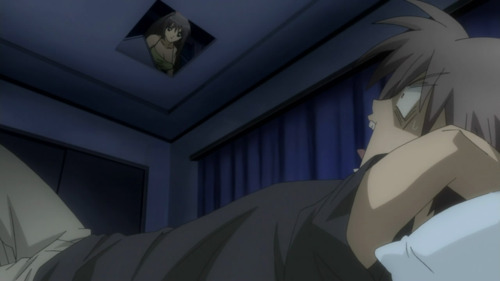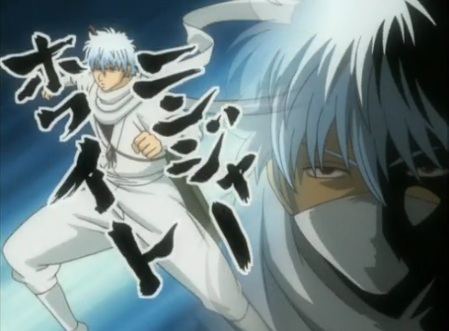
に, in hiragana, or ニ in katakana, is one of the Japanese kana, which each represent one mora. The hiragana is written in three strokes, while the katakana in two.
Pronunciation:
'に' is romanized 'ni' and pronounced ‘ni’ as in ‘nick’.
Words with 'に':
Word beginning with 'に':
- 日本語/にほんご (nihongo -> Japanese Language)
- 苦い/にがい (nigai -> bitter)
- 肉/にく (niku -> meat)
- 逃げる/にげる (nigeru -> to run away; to escape)
- にんじん (ninjin -> carrot)
- 庭/にわ (niwa -> garden)
- 日記/にっき (nikki -> diary)
- 西/にし -> (nishi -> west)
- 二/に -> (ni -> two)
- 任務/にんむ -> (ninmu -> mission; task; duty)
'に' in the middle:
- おにぎり (onigiri -> rice ball)
- あいにく (oiniku -> Unfortunately)
- 通行人/つこうにん (tsukounin -> pedestrian; passer by)
- 確認/かくにん (kakunin -> confirmation; affirmation)
- 犯人/はんにん (hannin -> culprit; criminal; offender)
- 間に合う/まにあう (maniau -> to be in time)
'に' at the end:
- あに (ani -> big brother (sibling))
- 国/くに (kuni -> country)
- 谷/たに (tani -> valley)
- 蟹/かに (kani -> crab)
- 確かに/たしかに -> (tashikani -> certainly; undoubtedly)
- それに (soreni -> besides; moreover)
- たまに (tamani -> once in a while; sometimes; infrequently)
- 特に/とくに (tokuni -> particularly)
- お大事に/おだいじに (odaijini -> get well; all the best; God bless you)
- 実際に/じっさいに (jissai ni -> actually)
“に” as Particle:
- Location
私は学校にいる / わたしはがっこおにいる (Watashi wa gakkoo ni iru -> I’m at school) - Direction
今夜はお母さんとデパートにいくよ / こんやはおかあさんとでぱあとにいくよ (Kon’ya wa okaasan to depaato niiku yo -> Tonight, I’ll go to the department store with my mom) - Indirect Object
彼女に返してください。。/ かのじょにかえしてください。。 (Kanojo ni kaeshite kudasai... -> Give it back to her, please...) - Passive Agent
あの焼肉は姉に食べられた。/ あのやきにくはいもおとにたべられた。(Ano yakiniku wa imooto ni taberareta. -> That grilled meat was eaten by my little sister.) - Noun, Verbs, Purpose, Intent
映画を見に行く。/ えいがをみにいく。(Eiga wo mi ni iku -> I’m going to see a movie)
Stroke order:
The hiragana に is made with three strokes:
- A vertical stroke from top to bottom.
- A short, horizontal stroke to the upper right of the first stroke, going from left to right.
- Another short, horizontal stroke at the bottom right of the first stroke, going from left to right.


______________
YO-ON
As you may still remember from 3 previous lessons (Hiragana: Lesson 7, lesson 12, and lesson 17), In the Japanese language there are also contracted words called 拗音 (yo-on). They are made up of two letters written together. A hiragana ending with ‘i’ such as ki (き), shi (し), etc... followed by a small ya (ゃ), yu (ゅ) or yo (ょ).
The yoon’s for 'ni' are:
- にゃ/nya Ex. にゃあ (nyaa -> cat mewing)
- にゅ/nyu Ex. 牛乳/ぎゅうにゅう (gyuunyuu -> milk)
- にょ/nyo Ex. 女官/にょかん (nyokan -> court lady)
______________
Task: You shall write 'に' 50 - 100 times in your textbook. Don’t just write with your head blank, memorize the shape, the stroke order, the sound, the pronunciation (echo the sound of the character each time you write it down), etc.
And after you finish with that, write 'な' and 'に' one after another, repetitively (な, に, な, に, な, に, etc.) 50 times (100 if you have time).
Facts of today~
NINJA!
Ninja were people provided with special techniques in the art of war, and flourished in the Sengoku era (1467-1568). They are also known as shadow warriors. The Ninja were very spiritual people, and their beliefs became an essential part of Ninjutsu (the art of stealth).
Ninja could sneak into enemy territories and spy on the enemy's war tactics. They sometimes assassinated enemy leaders. Some of the Ninja techniques are walking on and submerging into water, scaling walls, walking without sound and disappearing suddenly without any trace.


Credits: Thanks to Tna again for helping with the examples!

No comments:
Post a Comment